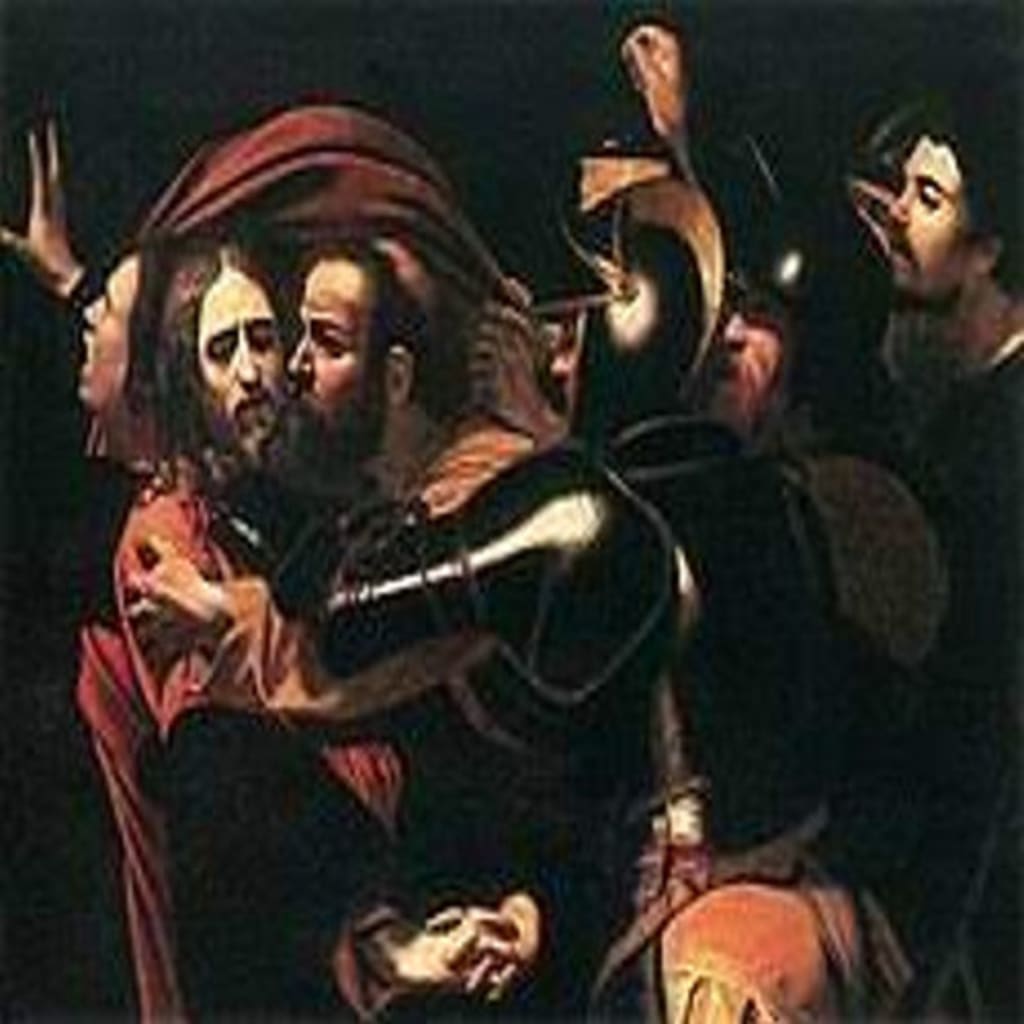
The Counter-Reformation was a period when the Catholic Church was at the height of its efforts to counter the Protestant Reformation. During this time, the Church commissioned numerous artworks to serve as powerful tools of propaganda against the Protestant faith. The world of religious art had lost its way, and artists were tasked with creating emotionally engaging and intense works that were accessible and realistic enough to inspire the masses.
One artist who played a pivotal role in this era was Caravaggio, a man whose life was as tumultuous as his art. Caravaggio arrived in Rome in 1592 as a young, broke, and homeless individual, already having faced trouble with the authorities in Milan. Rome was a city where the devout rubbed shoulders with the profane, a place where nuns and cardinals coexisted with gangs and prostitutes. In this chaotic and diverse environment, Caravaggio found his niche.
It's impossible to separate Caravaggio the criminal from Caravaggio the painter of sacred images. In fact, one could argue that one could not exist without the other. Caravaggio lived in a world where honor was paramount, where even the slightest insult required revenge. He had a hair-trigger temper and was always on the lookout for trouble.
Caravaggio not only broke the rules of his life but also of art itself. He dared to explore the dark and unpalatable aspects of the Christian narrative. His art represented the world as it was, not as it should be. To the horror of some clergy members, Caravaggio accentuated the poverty and common humanity of Christ and his followers. He used ordinary working people as his models, including those considered the scum of the city: street workers, prostitutes, beggars, and rent boys. He scandalized Rome by portraying the Virgin Mary with dirty feet and Saint Peter as a terrified and bewildered old man. The church had asked for realism, and Caravaggio delivered it.
One of Caravaggio's remarkable works that exemplifies his unique approach is his rendition of the betrayal of Jesus with a kiss. This subject had fascinated Italian artists for centuries, but Caravaggio approached it with brutal honesty. Comparing Caravaggio's version with an earlier one by Giotto, we see a stark contrast in style and storytelling. While Giotto offers a more complete and chaotic portrayal of the events leading to Jesus's crucifixion, Caravaggio strips the scene down to its emotional core.
Caravaggio's version takes place in a dark, shadowy world where violence lurks in the shadows. There is no background, no architectural details or gardens, just darkness. Only the moonlight off-screen illuminates the scene, emphasizing the direction of light from left to right, a characteristic of Caravaggio's preferred lighting style. It's as if a spotlight shines on Jesus and Judas, suggesting divine intervention.
Giotto's version, in contrast, presents the event as a religious spectacle. Caravaggio challenges viewers to contemplate what it would be like if Jesus looked like an ordinary man when arrested. He emphasizes Christ's humanity rather than his divinity, highlighting Jesus's sorrowful resignation to his fate.
Another striking difference between the two versions is the number of characters. While Giotto's painting features a large crowd, Caravaggio limits his scene to just seven characters. John, Jesus, Judas, and several soldiers create an intense, tightly packed composition that implies a larger, unseen mob. John, depicted beardless and in red and green attire, likely represents all the fleeing apostles. This choice reinforces John's role as a counterpoint to Judas, the betrayer. Interestingly, John and Jesus share identical hair and seem to merge into one being, symbolizing their interconnected destinies.
Caravaggio's innovative approach to portraying Judas is particularly noteworthy. In most depictions, Judas is a one-dimensional villain driven by either Satan's influence or greed. Caravaggio, however, presents Judas as a nuanced and conflicted character. His face reveals a complex mix of emotions, including love, jealousy, hate, and pride. Judas appears haunted by his actions, immediately regretting his betrayal and gripping onto Jesus for dear life.
Caravaggio's use of tenebrism, extreme chiaroscuro, creates violent contrasts between light and shadow in his works. He painted in a dark room using high lamps to direct light onto his subjects, allowing him to achieve dramatic lighting effects. Caravaggio's choice of a dark red-brown ground coat, rather than the typical mid-tone ground, contributed to the deep shadows and heightened contrasts in his paintings.
Unlike many artists who used preliminary sketches, Caravaggio painted directly onto the canvas with minimal preparation. He marked the primer coat with a point or the back of his brush to create a general outline, allowing him to reposition his models as needed. Caravaggio worked quickly, blending colors without waiting for each layer to dry. His live studio models played a crucial role in his fast-paced painting process.
"The Taking of Christ," considered a masterpiece in its time, mysteriously disappeared for 300 years before being rediscovered. In 1990, an Irish woman bought what was thought to be a copy of the painting in a Scottish antique shop. It turned out to be an authentic Caravaggio. This rediscovery shocked the art world, and the painting was eventually put on public display in 1993.
Caravaggio's life was marked by constant movement and conflict. After his time in Rome, he traveled to Naples, Malta, and Sicily, where he created masterpieces and accumulated enemies. He lived a life on the run and ultimately died alone on a beach in Tuscany. Caravaggio's art, however, continued to resonate with audiences long after his death.
Caravaggio's paintings are profoundly spiritual, despite his tumultuous personal life. They captivate viewers with their unflinching truthfulness and emotional depth. He rejected the conventional approach to Italian painting, portraying Christian scenes as if they were unfolding in the present. In doing so, he left a lasting mark on art history.
In a curious parallel to his painting "The Taking of Christ," Caravaggio's own body disappeared for centuries before being discovered in 2010. New tests revealed that lead poisoning from his paints, rather than syphilis, malaria, or his numerous enemies, was the cause of his death. Caravaggio's life and art remain a testament to the complex interplay between darkness and light, both in the canvas and in the artist's tumultuous existence.
About the Creator
Enjoyed the story? Support the Creator.
Subscribe for free to receive all their stories in your feed. You could also pledge your support or give them a one-off tip, letting them know you appreciate their work.





Comments
There are no comments for this story
Be the first to respond and start the conversation.